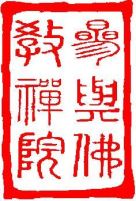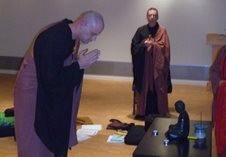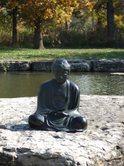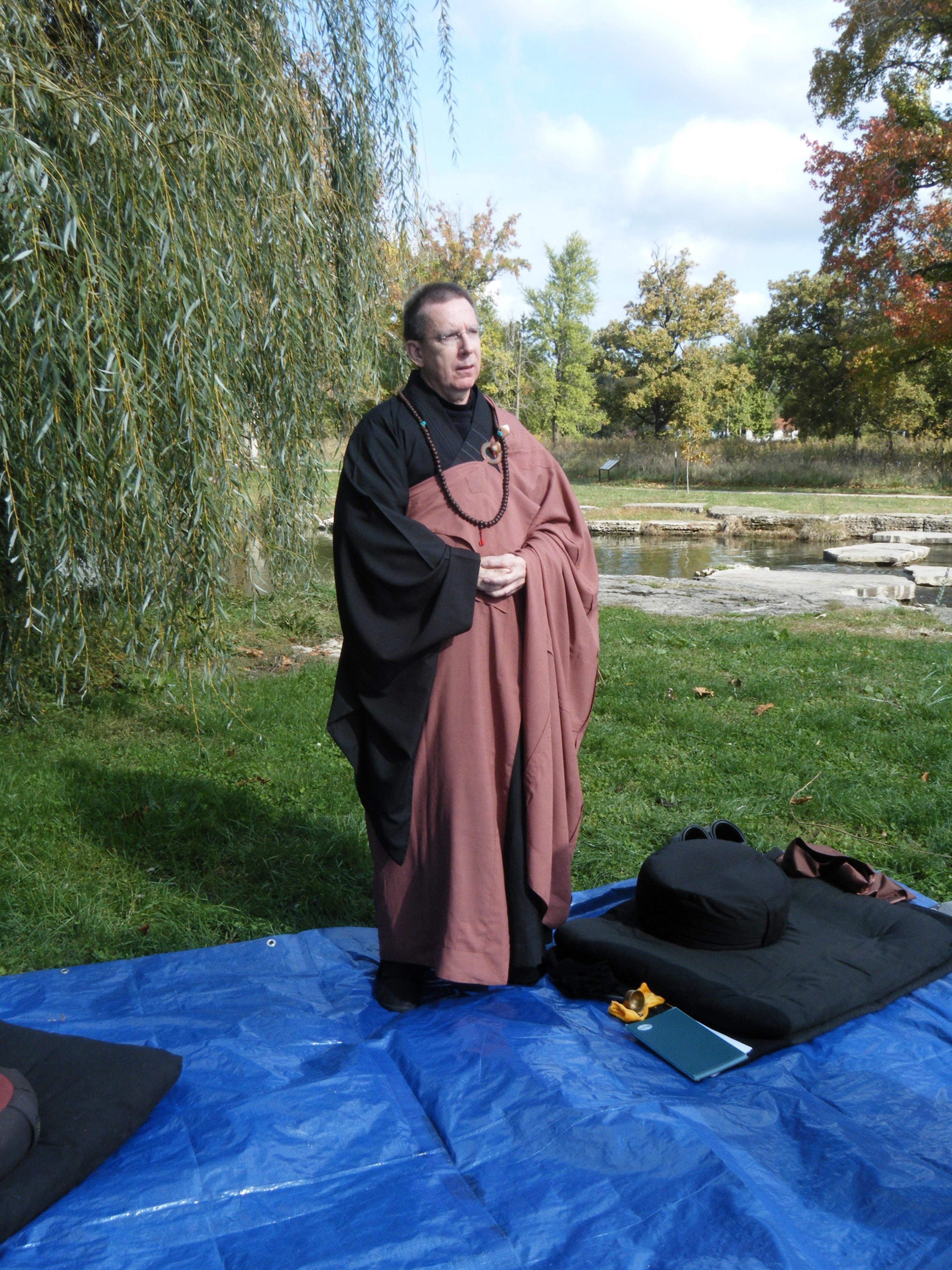By: David Xi-Ken Astor, Sensei
My Dharma brother, Wayne Shi, has spent a considerable amount of time in the study of ancient Buddhist history and the Sutras in order to understand the differences between myths, magical practices, mysticism, and metaphysical principles as they are presented in the various practices within Buddhist schools and traditions. All this in order to sift through how the ancient mind and our contemporary mind comes to understand the realities of the universe as we come to experience them. Ancient Buddhist traditions were nourished in the metaphysical world while the modern world has science to guide our exploration using developed Buddhist thought as our practice. How we teach Buddhism has changed a great deal from the time of the Buddha, as it should have considering the causal nature of our world. The Buddha himself would bow to this reality.
There is an additional consideration I would like to present to you that gives meaning to how we come to study and practice the dharma. History is the key to understand how we got to where we are in this moment. Without history we are condemned to walk in ignorance of many things that just might require us to spend a great deal of time repeating acquisition of knowledge. The study of history, our Buddhist history, adds to our gaining wisdom, and by this act we become ready to walk with confidence the middle path to human flourishing. But there is a problem to avoid when we engage the history lessons from the past.
The Mahayana Buddhist tradition is full of legends that explain how some of its history was shaped. These legends our full of images and explanations surrounding the Buddha that defy how our contemporary understanding of the natural world functions. Take for example how Buddhist history tells us that the Buddha determined that his students were not yet ready to hear the dharma, and as a result he hid his teachings in serpent-like creatures who lived under the sea until the time came for a great master named Nagarjuna to retrieve them. Other examples in the Buddhist historical achieves tell of the magical events surrounding the conception and birth of the Buddha. These accounts, and many others, have been passed down as though they are factual history, but we know they are not of course. Yet today, we have some contemporary students, and some teachers, that repeat this history as though they are reality. What historical research informs us is that these Mahayana texts gradually emerged way after the death of the Buddha. In fact, over centuries.
Let me bring to your attention one of the foundational sutras in our Mahayana tradition and central to Ch’an and Soto Zen schools of practice, the Heart Sutra. Many still view this sutra as being an accurate account of the Buddha’s words. In other words, the Heart Sutra is an historical document for them. But it can’t be considered as such because history is empirical by nature and it can not be proven that the Heart Sutra is a factual narrative. In addition, this sutra has been translated many times during it’s own history, and thus, subject to change always inherent when language is involved. The Heart Sutra, as well as the countless mystical accounts, is not to be considered as history, but a story. The word “story” is a more encompassing category than is “history”. Both are types of narrative, but historical narratives derive from validated facts, while stories are not limited by the demands of factual accuracy. In our present day literature we have various forms of story telling – novels, films, and theatrical performances for example. While these can be entirely fictional, they can still convey values and ethical teaching that gives meaning to our lives. We just have to work to find the meaning. It is the meaning of the story, not the facts as presented that we should take away and ponder. When we get caught up in the fantasy and magic we miss the point altogether. Nevertheless, many very good commentaries have been given to us by scholars of this sutra that use contemporary understanding that points to the Dharma within it.
Some Buddhist traditions, maybe many, claim its literature, doctrines, practices, and sources come from unimpeachable authority. Some even identify Siddhartha as a “Universal Teacher” whose realization of the Dharma is unsurpassed and “perfect,” staking their authority directly from the Buddha. All the Buddhist traditions, including my own, have lineage scrolls that are traced back to Siddhartha. Therefore tradition itself becomes a kind of unimpeachable source. I honor my tradition and those masters that have gone before me and as legacy teachers have passed down wonderful teachings based on their experience of encountering the dharma. All traditions have this treasure in there history. But we must not accept legacy teaching as anything other than building blocks that we now stand on to support our practice. We must avoid thinking that the sources of our study are inflexible sources that are not subject to the laws of the mutual-causal Universe. As our knowledge continues to grow, we work to effect change that works to improve our understanding of how the Universe is. We have great history and stories to rely on. But we must never forget our responsibility for shaping Buddhist practice for the new century. Our technology now gives us the ability to record the historical march of Buddhism into the West. We must avoid making the mistake that myths are history, and miss the opportunity of finding the lessons within the story that is not about the story but about the reality it reflects. When we are able to do this the story becomes valuable and sits in its place in Buddhist history reflecting the flexibility inherent in all Buddhist thought.
As a wise master once said when using his finger to point to the moon, it is not about the finger. If we miss this valuable lesson when we study the ancient Buddhist canon and the legacy teachings as though they are what is real, we miss the point that they too are just the finder. Use them as a guide, put don’t forget to look up. And beyond.
Note: When I spell dharma with a small “d” it represents Buddhist teachings/thought, when capitalized it represents Universal reality (or the Universal expressing itself). I like to avoid using the word “truth(s)” as that can often drag us into the weeds of misunderstanding.


















































































